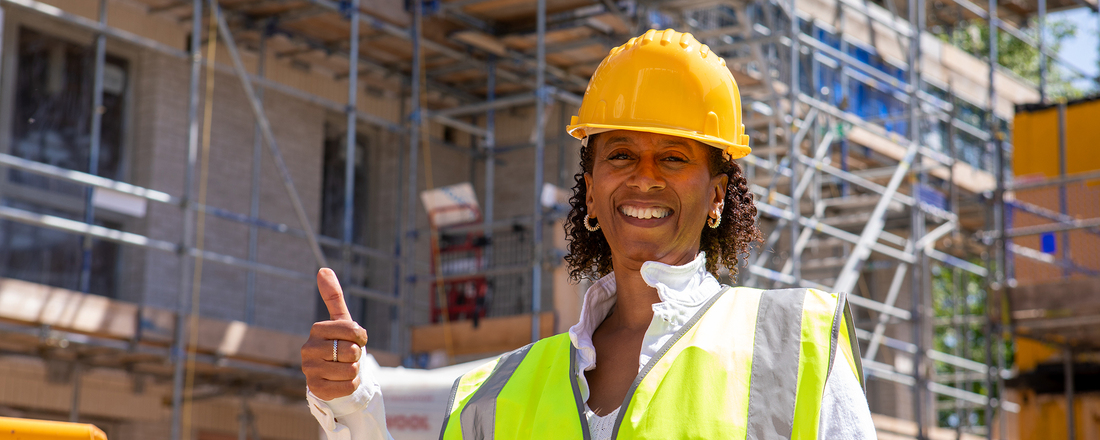Get updates from The Developer straight to your inbox Yes, please!
Tom Chance on community land trusts: “It’s about giving communities ownership and power over the land”
Few people may know what a Community Land Trust is, but the benefits of the model are too big to ignore, Tom Chance, chief executive of the Community Land Trust Network says in this interview for The Developer Podcast

“I’m sure if you ask the average person on the street, they would have no idea what you’re talking about,” Tom Chance says of the Community Land Trust (CLT) – a legal structure that allows communities to democratically own, manage and develop land. “It’s about giving communities a democratic muscle with which they can engage in the land and property system.”
Chance is explaining the role of the CLT in an interview for The Developer Podcast. “Industry people may have heard of the term – but one of the common misconceptions is that community land trusts are just about housing.”
Clearing up misunderstandings is part of Chance’s role as chief executive of the Community Land Trust Network – a charity and membership organisation working to mainstream community ownership in England and Wales. They support CLTs, seek to influence policy, and in short, the Network would like to see a community land trust in every community that wants one.
Since the return of Michael Gove MP as Secretary of State for the Department for Levelling Up, Housing and Communities, Gove has been making positive noises about increasing the agency of communities. But as Chance points out, there is a big difference between community consultation and a community land trust – which gives communities ownership and power over the land.
As Chance explains, even where community engagement is done well, “the decisions remain in the hands of the landowner and the housing association, as well as the ownership of the homes.” However with a community land trust, “the land becomes owned by the community. The community has a decision-making role.”
“It changes the power structure between the community and the housing association. It’s bringing [the community] in as a legally incorporated partner with ownership and power.”
“The land becomes owned by the community; the community has a decision-making role”
The community land trust is set out in section 79 of the Housing and Regeneration Act 2008 as an organisation set up for the purpose of buying land or assets for the benefit of the community.
“It has a legal obligation to think about the long-term social, economic and environmental wellbeing of that community and how those assets are held for that purpose,” says Chance. “It also has an open membership, so anybody who lives or works in the area can join it and they democratically control it.”
Chance says the biggest barriers for CLTs are finding land, finance and access to expertise, and the degree of these challenges can vary around the country. For example, in rural areas, it may be easier for CLTs to gain planning permission on rural exception sites, however in the city, due to competition from developers, CLTs are mostly dependent on public land.
“Give citizens a role in the redevelopment of their area and their homes”
Chance says some developers, housing associations or landowners are looking to partner with CLTs, and that these partnerships can take on various forms, and provide benefits in terms of management or expertise, while giving citizens a stake in a new community.
As for the resulting projects, there’s a huge range in what community land trusts have delivered to date. The majority are housing projects, but CLTs are also engaged in regenerating high streets, district heating projects, land preservation, food growing plots and more.
As for the homes, many of the CLTs develop projects with strong sustainability credentials. Chance says that their research has revealed affordability as the number one concern of CLTs, with climate change as number two. Not surprising then, that CLT homes delivered frequently exceed building regulations and strive for energy efficiency and green credentials.
Chance says there are many good reasons to opt for CLT as a stewardship model, citing research in the United States that community land trusts are more robust when faced with an economic downturn, with very low foreclosure rates: “It’s actually lower risk often to go with a CLT because you’re more likely to get planning permission; you’re more likely to get the community on board.”
“If you’re involved in a strategic site, make a plot available for a co-housing community, think of a CLT as the stewardship vehicle for the whole site, or make CLT the community engagement vehicle for the whole site,” Chance says. “Give citizens a role in the redevelopment of their area and their homes.”
“The more that we can get these concepts understood in the industry, the more they’ll be adopted,” adds Chance. “I mean it’s not necessarily utopia, but there’s definitely good evidence… that you do get a better community because you’ve involved people in the process.”
Subscribe to The Developer Podcast wherever you get your podcasts, and sign up to The Developer Weekly email to find out when new episodes go live. You can support our podcast on Patreon at www.patreon.com/thedeveloperuk
If you love what we do, support us
Ask your organisation to become a member, buy tickets to our events or support us on Patreon
Sign up to our newsletter
Get updates from The Developer straight to your inbox
Thanks to our organisation members
Become a member
© Festival of Place - Tweak Ltd., 124 City Road, London, EC1V 2NX. Tel: 020 3326 7238
